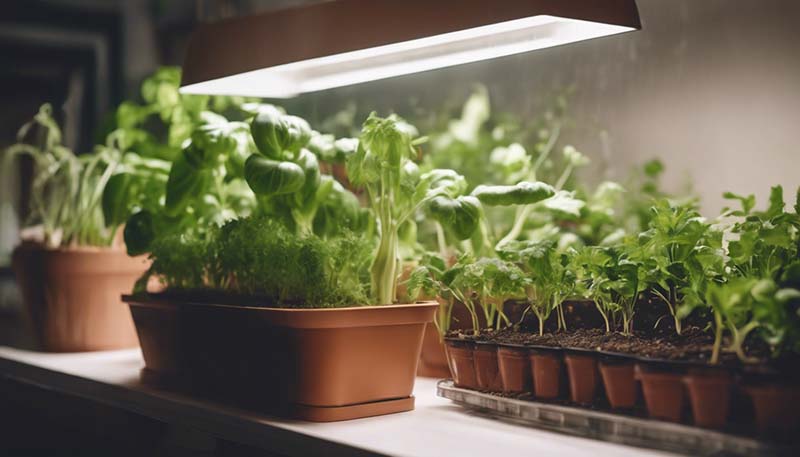Indoor Gardening Ideas: How to Grow an Indoor Vegetable Garden
Growing an indoor vegetable garden can be a rewarding and sustainable way to enjoy fresh produce year-round. Not only does it save space, but it also allows you to have control over the growing conditions and eliminates the need for pesticides. In this article, we'll explore various indoor gardening ideas and provide a step-by-step guide to help you create a thriving indoor vegetable garden.
1. Choose the Right Space
The first step in creating an indoor vegetable garden is to choose the right space. Consider the following factors:
- Light: Most vegetables require at least 6-8 hours of sunlight per day. South-facing windows are ideal, but east or west-facing windows can also work. If natural light is limited, consider using grow lights.
- Space: Measure the area where you plan to set up your garden and choose containers and plants that will fit comfortably.
- Temperature: Most vegetables grow best in temperatures between 65-75°F (18-24°C). Keep your indoor garden away from drafts, heating vents, or cold windows.
2. Select the Right Containers
Choose containers that are appropriate for the size and type of vegetables you plan to grow. Some options include:
Advertisement
- Planters: Large, rectangular planters are great for growing leafy greens and tomatoes.
- Hanging baskets: These can be used to grow trailing plants like tomatoes, cucumbers, or strawberries.
- Herb pots: Small pots are perfect for growing herbs like basil, parsley, and mint.
- Recycled containers: Repurposed containers like cans, bottles, or plastic containers can be used as long as they have drainage holes.
3. Choose the Right Soil
Use a high-quality, well-draining potting mix for your indoor vegetable garden. Avoid using garden soil, as it can contain pests and diseases. You can also add compost or slow-release fertilizer to provide nutrients for your plants.
4. Select the Right Plants
Choose vegetables that are well-suited for indoor growing conditions. Some popular options include:
- Leafy greens: Lettuce, spinach, kale, and arugula are easy to grow and don't require a lot of space.
- Herbs: Basil, parsley, cilantro, and mint are great for adding flavor to your meals and can be easily grown indoors.
- Tomatoes: Cherry and grape tomatoes are ideal for indoor gardens, as they don't take up much space and can be grown in pots or hanging baskets.
- Peppers: Bell and chili peppers can be grown indoors, but they may require additional light to produce fruit.
5. Provide Adequate Water and Light
Water your indoor vegetable garden regularly, ensuring that the soil is consistently moist but not waterlogged. Use a well-draining potting mix and consider using a self-watering system or drip irrigation to maintain consistent moisture levels. If natural light is insufficient, use grow lights to provide the necessary light for your plants.
6. Fertilize and Prune as Needed
Feed your plants with a balanced, water-soluble fertilizer every 2-4 weeks, following the package instructions. Regularly prune and remove dead leaves and flowers to promote healthy growth and prevent diseases.
7. Pest Control
Monitor your indoor vegetable garden for pests and diseases regularly. Use organic pest control methods like neem oil, insecticidal soap, or diatomaceous earth to manage pests without harming your plants or the environment.
8. Harvest at the Right Time
Harvest your vegetables when they are at their peak ripeness for the best flavor and nutrition. Regular harvesting can also encourage the plant to produce more fruit.
Conclusion
Indoor gardening offers numerous benefits, including year-round access to fresh produce, space savings, and control over growing conditions. By following these indoor gardening ideas and tips, you can successfully grow a thriving indoor vegetable garden and enjoy the rewards of your hard work.

Comment